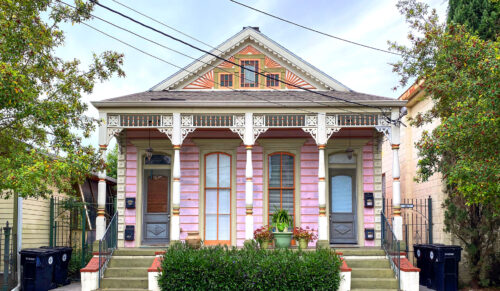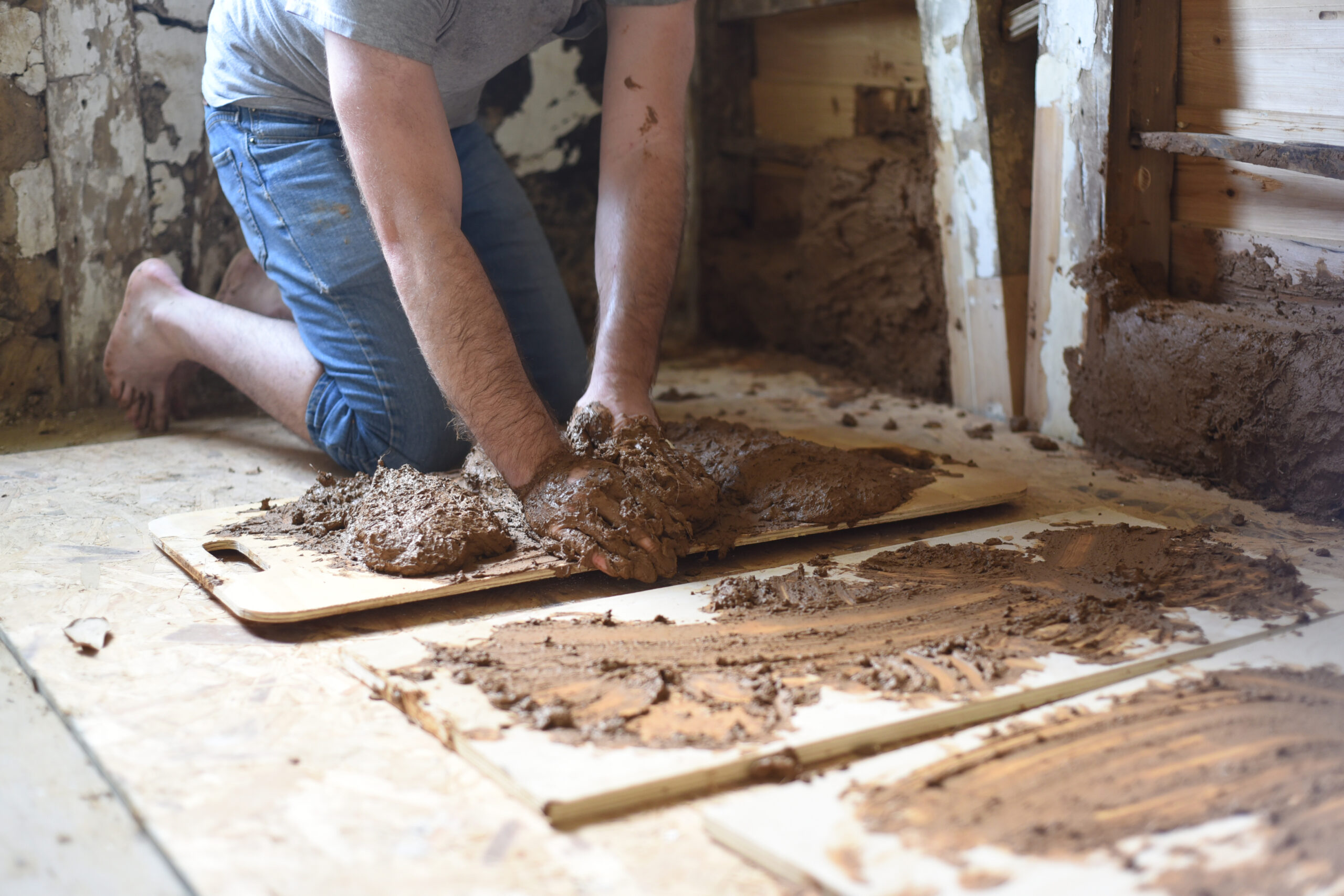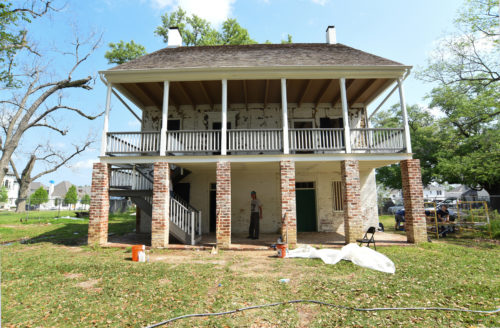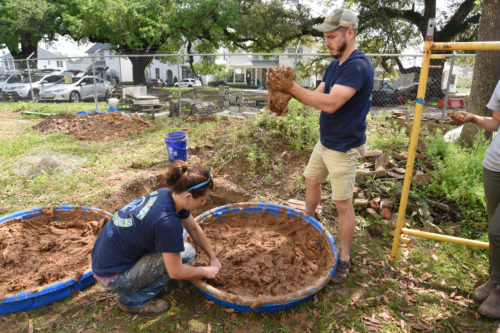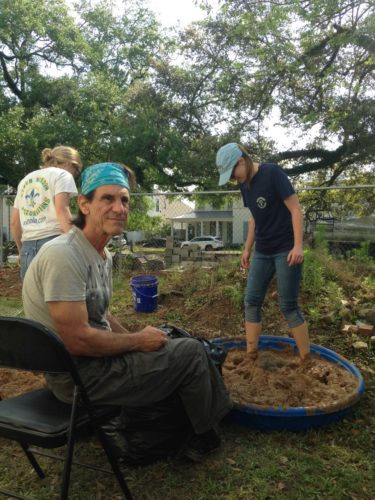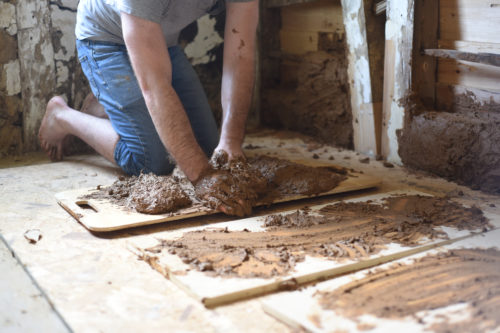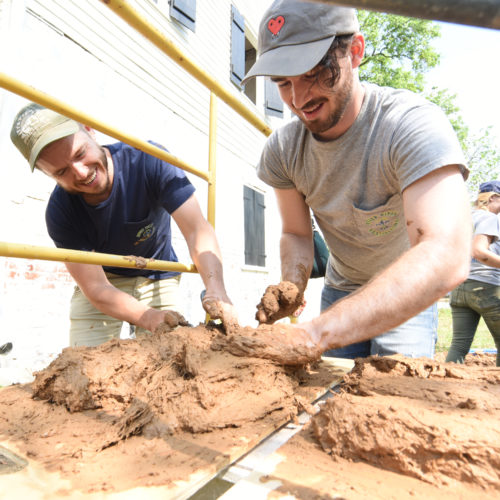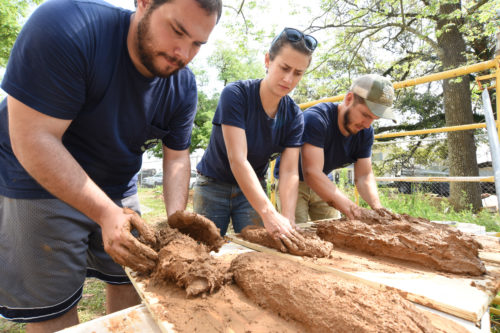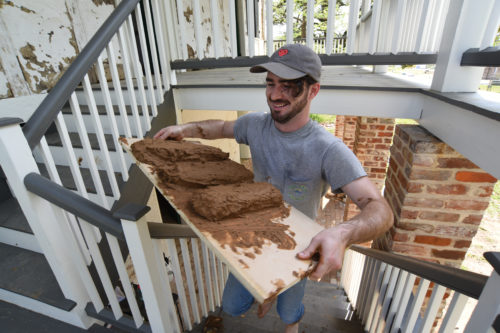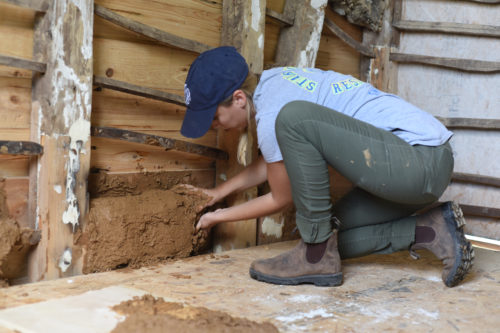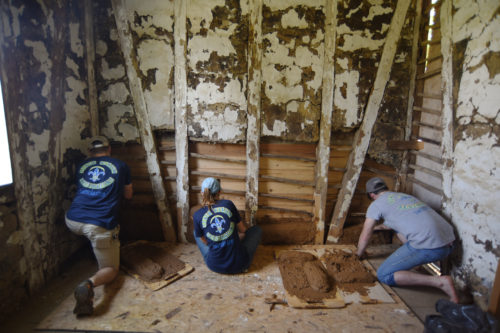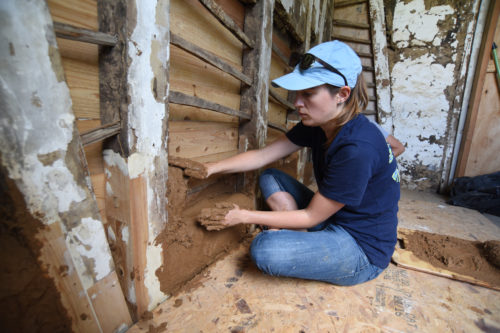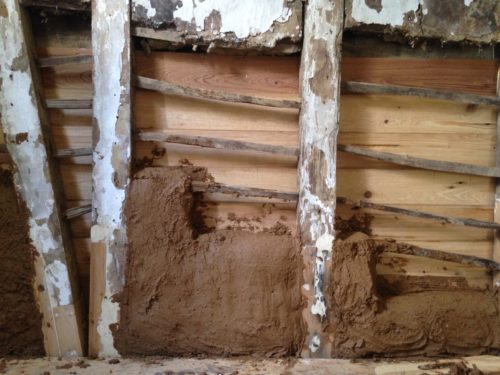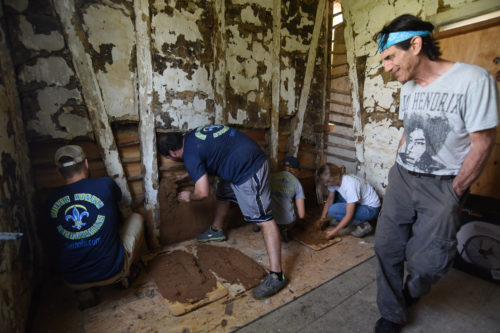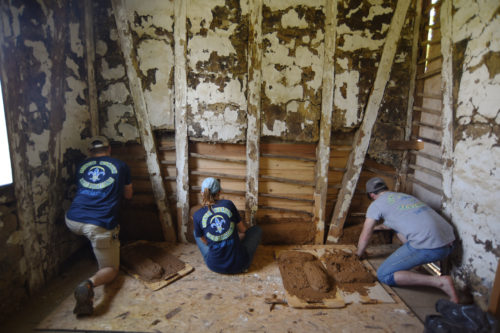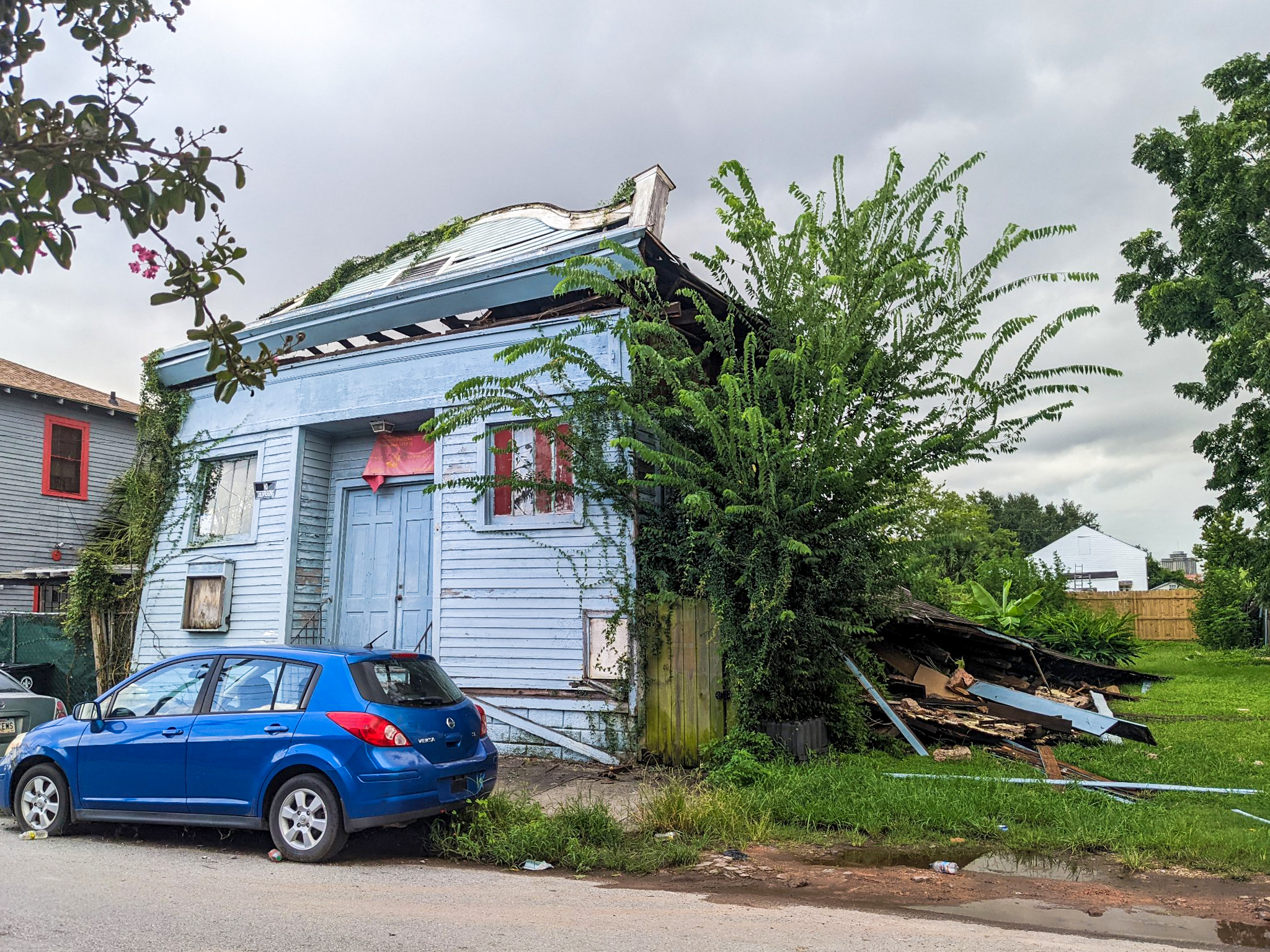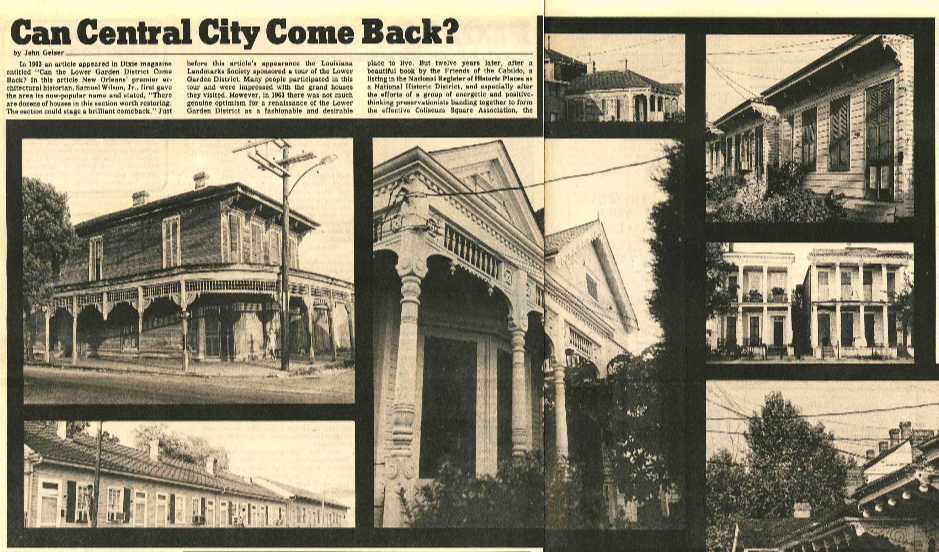“It’s like churning ice cream,” Dale Pierrottie laughs. “Mix it ‘til you can’t mix it no more.” Perched on a folding chair in front of two blue plastic kiddie pools filled with wet, yellowish-brown clay, he separates longs strands of Spanish moss and tosses them onto the piles of clay — first one pool, then the other. The Spanish moss quickly disappears into the muddy mix, as barefooted Staub Window Restorations employees stomp the mixture, learning the necessary task of being a tacheron or tacherette.
On a warm, March day in Baton Rouge, Lafayette-based artist and bousillage restorer Dale Pierrottie demonstrated the finer points of bousillage construction to the crew of Staub Window Restorations, a New Orleans-based restoration and preservation firm. This seemingly arcane construction material was once prevalent throughout the south and central parts of the state, used for all building types from pigeonnier to plantation house.
An earthen building material made of tempered earth and Spanish moss, used as infill between timber-frame construction, elements of bousillage techniques can be traced to building methods utilized in Africa and Europe, as well as the Native Americans, who built with wattle and daub. Bousillage — the mixture of clay and Spanish moss — belongs uniquely to Louisiana’s architectural heritage, however. Despite many advantages, such as making use of cheap and widely available materials, natural fire retardency, and being a thermal mass able to keep a room cool on a hot Louisiana day, it fell out of use in the late 19th and early 20th centuries. Now only a few craftsmen continue the local building tradition, which calls for good weather and a lot of physical stamina.
Bousillage structures, like any other type of building, require upkeep and occasional repair. That March day, the team was working on the restoration of Willow Grove Plantation, a small historic home south of downtown Baton Rouge off of Perkins Road. With its brick rez de chaussée (ground floor) and bousillage primer étage (first floor), external staircase, large gallery, and hall-less plan, the building is a textbook example of a Creole plantation house. It has been owned by the Kleinpeter family since it was constructed around
The family’s ties to the land on which the house sits date back even further, to a Spanish land grant in 1799. Willow Grove is currently undergoing a complete restoration to its original appearance. Staub Window Restorations is undertaking the task, which called for the lesson in bousillage repair.
The first step in making bousillage, according to Pierrottie’s time-tested method, whether to repair or build anew, is gathering Spanish moss. The dark inner fibers of Spanish moss provide structure and stability to the completed wall. Once a sufficiently large pile of moss has been collected, the moss is boiled crawfish-style to flash cure it, though whether retting the moss, as this process is called, is a necessary step is still up for debate. The fully dried moss is “fluffed” and gently separated, then tossed into a pit (or kiddie pool) of wet clay handful by handful, where it is then stomped. The stompers, called tacheron or tacherette in the French Creole tradition, give their legs a rest once enough moss has been incorporated into the mud, and turn their attention to twisting and shaping foot-and-a-half-long torchons, or loaves. Still wet, each torchis is then draped over a stave, or barreau, between larger timber framing members. Working from the bottom up, the wall takes form as the earthen loaves are packed in tightly. Finally, the wall is smoothed to be flush with the framing timbers and re-smoothed as necessary during the days-long drying process.
Pierrottie’s technique is unscientific and unquantifiable, based on years of learning by doing and gaining knowledge of what is “enough” or “just right” from those experiences. His demeanor was good-natured and patient with the bousillage novices of Staub, whose enthusiasm and excitement kept them going through hours of stomping, shaping, and carrying heavy torchons up a flight of stairs. After six hours, only about three-quarters of a ten-foot by four-foot section of wall has been repaired, but the heady sense of achievement hung about the group even as efforts shifted to mundane clean-up duties. Though the afternoon was not yet over, their work came to a halt early due to simple miscalculation in the amount of materials needed. The team will be back soon to finish the bousillage repairs, eager as ever to get up to their elbows in sticky mud.
Photos by Caroline Ourso


